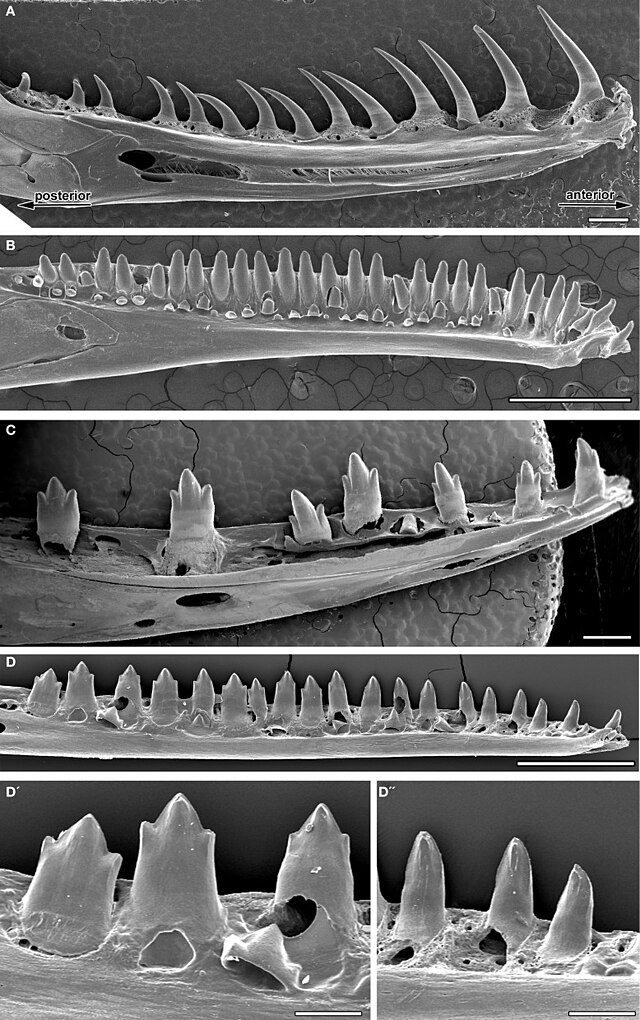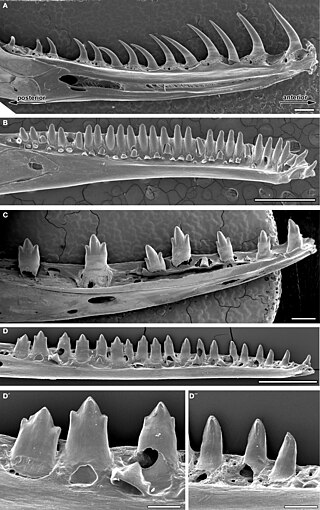Top Qs
Timeline
Chat
Perspective
Heterodont
Animals which have more than a single tooth morphology From Wikipedia, the free encyclopedia
Remove ads
In anatomy, a heterodont (from Greek, meaning 'different teeth') is an animal which possesses more than a single tooth morphology.[2][3] Human dentition is heterodont and diphyodont as an example.[4]

In vertebrates, heterodont pertains to animals where teeth are differentiated into different forms. For example, members of the Synapsida generally possess incisors, canines ("dogteeth"), premolars, and molars. The presence of heterodont dentition is evidence of some degree of feeding and or hunting specialization in a species. In contrast, homodont or isodont dentition refers to a set of teeth that possess the same tooth morphology.
In invertebrates, the term heterodont refers to a condition where teeth of differing sizes occur in the hinge plate, a part of the Bivalvia.[2]
Remove ads
References
Wikiwand - on
Seamless Wikipedia browsing. On steroids.
Remove ads
